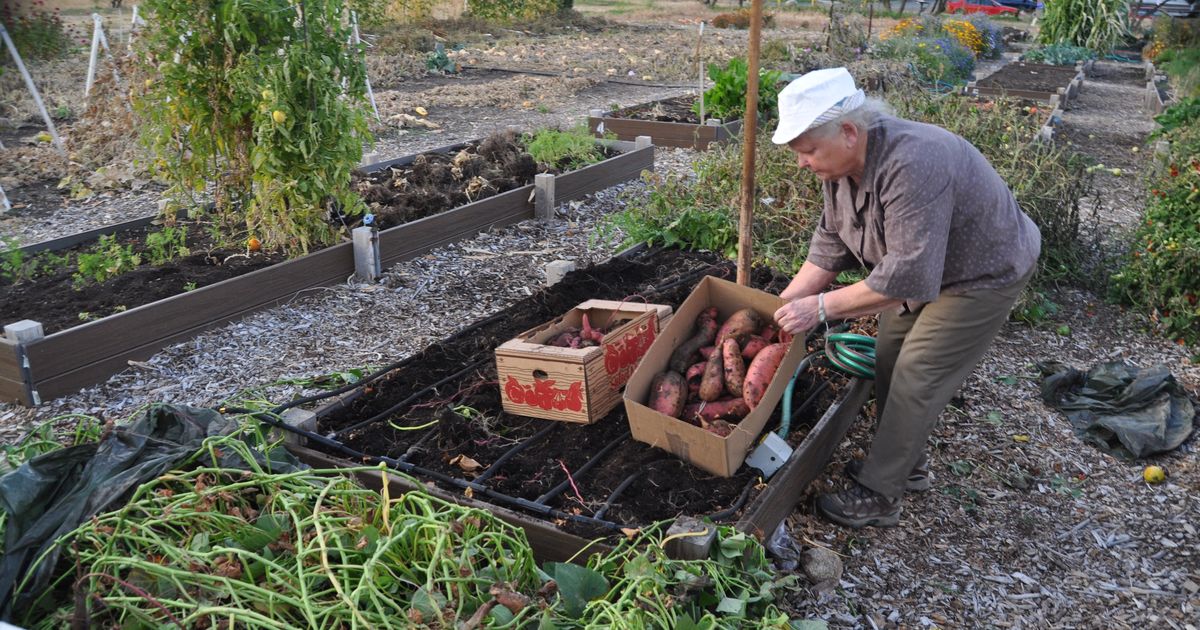
Let’s see. Did you serve them swimming in butter and brown sugar and topped with toasted marshmallows? Or did you behave yourself and season them with a hint of orange juice and brown sugar? Or did your Southern cooking tradition let you create a delectable dish none of us northerners have heard of.
Yes, the sweet potato is one of those Thanksgiving traditions that have as many forms as there are tables to celebrate .
Yams. Sweet potatoes. Just which one are they? It has been one of the great debates of Thanksgiving. To set the record straight: They are sweet potatoes. But here’s the rest of the story.
In June 1994, international sweet potato producers met at an international workshop in Peru to discuss marketing issues. It turns out that there was a great deal of confusion as to what the word “potato” actually referred to. Was it the Irish or English potato or the tropical native sweet potato to South America? In parts of the world, like Africa, where both are widely grown for the global market, semantics made a huge difference. So it was decided to write it as a single word to improve marketing communication.
However, this newspaper follows the New World College Dictionary spelling, sweet potato. Botanically, the sweet potato and the true yam are very different plants. The sweet potato is Ipomoea batatas, a member of the morning glory family. While it is native to South America, it is being grown in many tropical and temperate regions around the world.
In the U.S. it is grown in the South where North Carolina calls itself the Sweet Potato Capital of the U.S. and Southern California where it takes from 90 to 150 days to grow a crop.
The sweet potato is a storage root with a smooth, thin skin and a moist, sweet flesh that can vary in color from almost white to cream to the familiar orange.
The yam on the other hand is a member of the Diascorea species. It is native to the tropics and does not grow in even the warmest regions of the continental U.S. Ninety-five percent of the world’s yam crop is grown in sub-Saharan Africa where it has been a staple for thousands of years. Of the 600 yam species, the white yam, yellow yam and water yam are the most commonly grown.
The true yam is classified as a tuber (like the Irish potato) that can grow to weigh as much as 30 to 40 pounds at the end of their 180- to 360-day growing season. The tuber is very rough skinned with a scaly appearance that has no resemblance to the smooth-skinned sweet potato we are familiar with. The flesh of the orange variety is dry and has a starchy taste. Very few true yams are imported into the U.S. food markets. So how did this great confusion come about? That’s another couple of interesting stories.
It seems when the first slaves were brought from Africa, they substituted the sweet potato for the yam with which they were familiar. They referred to it by the same word they had always used, “nyami.” Over time the word was altered into the familiar English word “yam.” For decades it was used ubiquitously and interchangeably with sweet potato in the South.
Enter again the power of marketing. When the sweet potato was first brought to the U.S. with early Spanish explorers, the root was either an almost white or very light yellow color depending on where it came from in South America or the Caribbean. The white was Beauregard and the light yellow was Boniato or Cuban sweet potato.
Several decades ago the orange-fleshed sweet potato was developed and introduced in Louisiana. In an effort to differentiate it from the other sweet potatoes already on the market, the agricultural promoters decided to refer to it as a yam. The concept of the yam was already present in the public’s mindset and tradition so it was quickly adopted. As the yam/sweet potato was mainstreamed into the national food system, the confusion reigned supreme.
How interchangeable did the two terms get? When growers in North Carolina realized that they wanted to sharpen their marketing of the sweet potato, they changed the name of the North Carolina Yam Board to the North Carolina SweetPotato Commission.
So dig that leftover sweet potato dish out of the refrigerator and celebrate your new-found knowledge. In fact, do your attempts at dieting during the holiday season a favor. Go buy a few more pounds while they are on sale.
Without all the butter, sugar and marshmallows, one cup of cooked sweet potato provides 30 mg of beta carotene (vitamin A). Two-thirds of a cup provides 100% of the daily requirement of vitamin E. They have more dietary fiber than oatmeal, are virtually fat-free, cholesterol-free and very low in sodium. A medium sweet potato has just 118 calories.
———
Correspondent Pat Munts can be reached at pat@inlandnwgardening.com.
"sweet" - Google News
November 25, 2021 at 08:03PM
https://ift.tt/3rhgHeq
Gardening: To be clear, in U.S. yams are sweet potatoes - The Spokesman-Review
"sweet" - Google News
https://ift.tt/2PcPlld
https://ift.tt/2KSpWvj
Bagikan Berita Ini















0 Response to "Gardening: To be clear, in U.S. yams are sweet potatoes - The Spokesman-Review"
Post a Comment